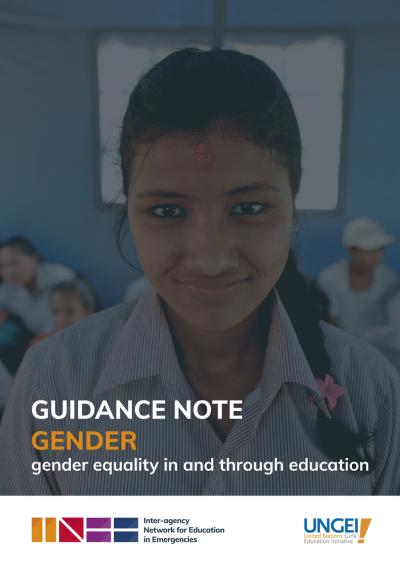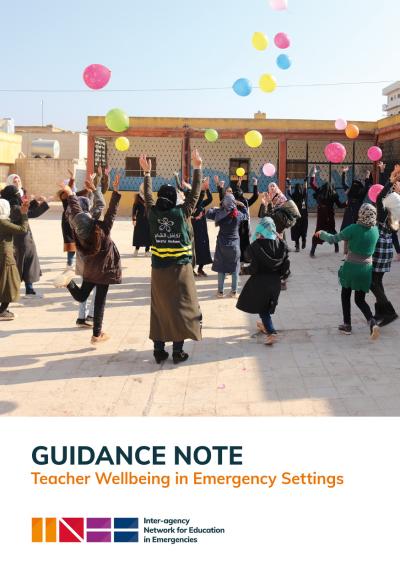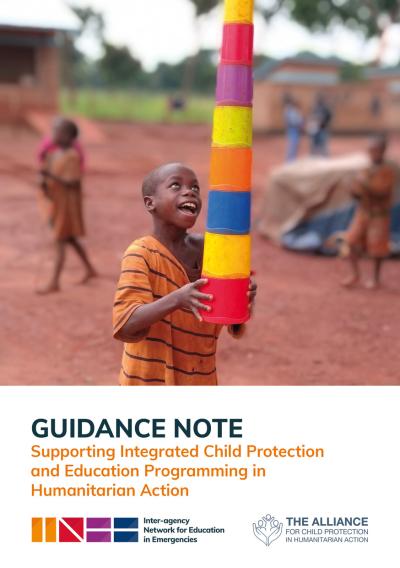Standard 15: Recruitment and Selection
A sufficient number of appropriately qualified teachers and other education personnel are recruited through a transparent and fair process, based on selection criteria reflecting diversity and equity.
Nesta página
1. Clear job descriptions: Develop clear, appropriate, non-discriminatory job descriptions and guidelines before any recruitment process begins.
Ser Notas de Orientação:
2. Clear and transparent recruitment criteria: Establish clear and detailed criteria for recruiting and employing teachers and other education personnel.
Ser Notas de Orientação:
3. Appropriate number of teachers and other education personnel: Ensure that the number of teachers and other education personnel recruited reflects current needs and finances.
Ser Notas de Orientação:
4. Safety and security of teachers and learners: Prioritize the security and safety of teachers and other education personnel and learners during the recruitment process, including conducting background checks on teachers.
Ser Notas de Orientação:
Job descriptions for teachers and other education personnel, including volunteers, must not discriminate based on gender, ethnicity, religion, disability, or any other personal characteristics. Job descriptions at a minimum should include roles and responsibilities, rights, compensation and pay, terms and conditions, working environment, a code of conduct, clear lines of support and reporting, and contract duration. These conditions should be harmonized among all stakeholders who employ teachers and other education personnel. Education jobs should be clearly advertised in the community.
Education actors should establish equitable recruitment and selection processes that are non-discriminatory and sensitive to the crisis or conflict. These processes should consider and address the challenges and opportunities teachers’ experience because of their gender, ethnicity, employment status, and displacement or refugee status.
If a crisis brings an influx of displaced persons, including refugees, systems should be put in place to screen potential teachers with clear criteria, including their qualifications, skills, and aptitudes and what experience is required. If qualified teachers do not have access to their professional certificates or documentation because of the emergency situation, or if there is an insufficient number of qualified teachers, it will be necessary to implement a transparent and impartial assessment process. This process should include a recruitment committee involving community members, education authorities, and existing education personnel. Such an assessment should determine whether applicants have the necessary teaching skills, including language of instruction, knowledge of relevant subjects, pedagogy, and others relevant to the learners’ situation and ages. Assessment of the skills, attitudes, and aptitudes of all candidates, whether they are trained or untrained teachers, is crucial. The minimum age for teachers and other education personnel should adhere to national labor laws and regulations, and to international labor and human rights instruments. It may be necessary to recruit younger people to serve as facilitators, assistants, or tutors (for more guidance, see INEE Guidance Note on Teacher Wellbeing in Emergency Settings).
Teachers play a critical role in creating protective learning environments, so their attitudes on child protection issues and the rights of children should be assessed during the recruitment process. Questions on attitudes about gender, corporal punishment, and child abuse will be integral to child safeguarding procedures. Teachers must ensure that the learning environment is inclusive for all learners, regardless of disability, gender, ethnicity, religion, nationality, language, or socioeconomic background. Teachers in a crisis context also will need to be aware of their learners’ psychosocial needs. Education stakeholders should work together to establish coherent and harmonized selection criteria for teachers, which will be important to ensure that teacher selection is fair and not biased by influential people in the community.
A gender-responsive recruitment process can help work towards a more gender equitable workforce. To support more equitable recruitment, recruitment committees should include women and men, and selection criteria should be transparent and consider the barriers faced by marginalized groups such as women and persons with disabilities. Evaluating gender gaps in the teaching staff will help to determine whether special measures are needed to proactively identify and recruit female or male teachers. These might include adjusting entry qualifications, providing ongoing training and additional support, or organizing safe transportation, and accommodation and child care for female teachers, especially those living in remote or underserved areas. Education stakeholders should engage with the community to promote awareness of the value of having both women and men as teachers at every level of education (for more guidance, see INEE Guidance Note on Gender).
It is critical that teachers can communicate clearly in languages learners will understand and that they can communicate with caregivers and community members. Where possible, it may be necessary to recruit teachers who speak both the local languages and those of a displaced population, including refugees. Additional language facilitators may be needed in some situations to help learners participate or transition into host community schools.
Another important consideration is community acceptance. Teachers and other education personnel should be able to interact easily and effectively with the community. When possible, they should be members of the affected community so they understand the social, economic, political, and cultural issues that affect daily life. However, a balance should be achieved between hiring from the local and other communities to ensure that there is no discrimination, for example between host and displaced communities or ethnic minorities.
Education stakeholders should determine what is a locally appropriate and realistic number of teachers and other education personnel. Important factors to consider include:
- How many learners the available learning spaces can safely accommodate
- The teacher-student ratio
- The need for female teachers and/or support staff at all levels
- The subject areas that will be taught and teachers’ qualifications
- National and local standards for class size and teacher-student ratios
- The ratio of support staff to teachers and counselors to learners
- The ages of children, as younger learners will benefit from smaller classes and direct time with teachers
The ILO/UNESCO Recommendation concerning the Status of Teachers recommends that class size should allow the teacher to give learners individual attention. Crises and displacement may contribute to higher student-teacher ratios. Education stakeholders should ensure that teachers and other education personnel receive support to manage larger classes, especially in contexts where displacement is in flux and class size may grow significantly (for more guidance, see INEE Guidance Notes on Teaching and Learning).
A critical aspect of the education response is to support collective efforts to mobilize the funding needed to plan for, recruit, and maintain a consistent cadre of teachers. Supporting a larger cadre for the duration of an emergency and ensuring a sustained and appropriate teacher-student ratio into recovery is likely to require substantial funds. Efforts to secure funding should be led by the national authorities and relevant coordination mechanisms. Gaps in funding will make it necessary to establish priorities across the learning continuum (ECD, primary, secondary, tertiary), learning approaches (formal, non-formal), and length of service (for more guidance, see INEE Guidance Notes on Teacher Compensation).
It is important that recruitment processes consider the potential risks teachers and other educational personnel, including volunteers, and learners may face. If qualified teachers do not have their certificates or other documentation because of the emergency and obtaining them poses a risk because of the security situation, education stakeholders should consider alternate ways to assess their skills and qualifications. They also should conduct a safety assessment of the learning environment and establish systems for evacuation or other responses. This should be done in coordination with those responsible for external safety and security, school management committees, and the education authorities.
To ensure the safety of learners, education authorities and other relevant stakeholders should conduct background checks and obtain references for teachers and other education personnel, as much as the situation allows. Local authorities or other respected members of the community should provide this information. Background checks and references should be in keeping with the policies and protocols of the child protection and education authorities (for more guidance, see Minimum Standards for Child Protection, Standard 23).
Teachers also need to be safe from discrimination or harassment by their peers, supervisors, or learners. This includes discrimination or harassment based on disability, age, gender, sexual orientation, class, caste, ethnicity, socioeconomic background, or any other characteristic. The recruitment of teachers and other education personnel should be based on clear criteria that consider the circumstances they will be working in, including any risk to individuals or groups. When aiming for diversity, particularly gender parity, it is important to consider the safety of teachers and the principle of do no harm, which will help to minimize risks. When placing teachers and other educational personnel, it is important to have mechanisms in place for reporting harassment and discrimination. It is important that teachers know how to use these mechanisms and are safe when they do so (for more guidance, see INEE Guidance Note on Teacher Wellbeing in Emergency Settings; INEE Guidance Note on Gender).
Indicadores
| INEE Domain | INEE Standard | Indicator/Program Requirements | Clarification | Numerator | Denominator | Target | Disaggregation | Source of Indicator | Source of Data | Available Tool | Crisis Phase | |
| Teachers and Other Education Personnel | Recruitment & Selection (TEOP Std 1) A sufficient number of appropriately qualified teachers and other education personnel are recruited through a participatory and transparent process, based on selection criteria reflecting diversity and equity. |
4.1 Education personnel selection process is transparent, based on selection criteria that reflect diversity and equity | Scale 1-5 (1 = low, 5 = high) | 5 | NA | New | School/program administrative data/documentation | Tool required | All stages | |||
| 4.2 Pupil-trained teacher ratio | Number of students | Number of trained teachers | Equal to or below the national average | NA | UNESCO | School/program administrative data | No tool required; INEE MS and indicator definitions sufficient | All stages | ||||
| 4.3 Percentage of male/female teachers/administrators | Number of male/female teachers and/or administrators | Number of teachers and/or administrators | 50% | Gender | ECW | School/program administrative data | No tool required; INEE MS and indicator definitions sufficient | All stages | ||||
| 4.4 Percentage of teachers from minority groups | Number of teachers from minority groups | Number of teachers | To be defined by percentage of minority groups in relevant community | Gender Ethnicity Mother tongue Wealth quintile Disability Displacement status As relevant |
New | School/program administrative data | No tool required; INEE MS and indicator definitions sufficient | All stages | ||||
| Conditions of Work (TEOP Std 2) Teachers and other education personnel have clearly defined conditions of work and are appropriately compensated. |
4.5 Percentage of targeted learning spaces in which a code of conduct (i) exists (ii) is enforced and (iii) teachers and communities are trained in / informed about its application | Measures the application of codes of conduct for teachers and administrators in programs. Codes of conduct are developed locally and should reflect the different contexts of operations, rather than being "one-size-fits-all." Figures can be provided based on surveys or estimates. To qualify, learning spaces should display all of (i), (ii), and (iii). |
Number of targeted learning spaces whereby a code of conduct (i) exists, (ii) is enforced, and (iii) teachers and communities are trained in / informed about its application | Number of targeted learning spaces | 100% | Formal vs non-formal | ECW | School/program administrative data | Tool required | All stages | ||
| 4.6 Percentage of teachers receiving equal/equitable compensation (based on gender, ethnicity, religion; pending context) for same position | Number of teachers receiving equitable compensation compared to other teachers at the same level | Number of teachers at each level | 100% | Gender Ethnicity Mother tongue Wealth quintile Disability Displacement status As relevant |
New | School/program administrative data | No tool required; INEE MS and indicator definitions sufficient | All stages | ||||
| 4.7 Percentage of teachers and other education personnel compensated | Adequate levels of compensation should be defined by the program | Number of teachers and other education personnel compensated | Number of teachers and other education personnel | 100% | Gender Ethnicity Mother tongue Wealth quintile Disability Displacement status As relevant |
ECW | School/program administrative data | No tool required; INEE MS and indicator definitions sufficient | All stages | |||
| 4.8 Percentage of teachers and other education personnel who have signed a contract specifying their compensation and conditions of work | Numbers of teachers and other education personnel who have signed contracts specifying compensation and conditions of work | Number of teachers and other education personnel | 100% | Gender Ethnicity Mother tongue Wealth quintile Disability Displacement status As relevant |
New | School/program administrative data, teacher survey | No tool required; INEE MS and indicator definitions sufficient | All stages | ||||
| 4.9 Percentage of teachers supported through coordinated conditions of work across education actors/partners | Job descriptions, descriptions of working conditions, and codes of conduct should be included in contracts. These should specify - job tasks and responsibilities; - compensation; - attendance requirements; - hours and days of work; - length of contract; - code of conduct; - support, supervision and dispute resolution mechanisms. |
Number of teachers supported through coordinated conditions of work across education actors/partners | Number of teachers | 100% | Gender Ethnicity Mother tongue Wealth quintile Disability Displacement status As relevant |
New | School/program administrative data, teacher survey | No tool required; INEE MS and indicator definitions sufficient | All stages | |||
| 4.10 Percentage of targeted learning spaces that have clear disciplinary actions in place for teachers, school leaders, and administrators who have broken the code of conduct | Number of targeted learning spaces that have clear disciplinary actions in place for teachers, school leaders, and administrators who have broken the code of conduct |
Number of targeted learning spaces | 100% | Formal vs non-formal | ECW | School/program administrative data, teacher survey | No tool required; INEE MS and indicator definitions sufficient | All stages | ||||
| 4.11 Percentage of teachers supported through coordinated compensation agreements across education actors/partners | Number of teachers supported through coordinated compensation agreements across education actors/partners | Number of teachers | 100% | Gender Ethnicity Mother tongue Wealth quintile Disability Displacement status As relevant |
New | School/program administrative data, teacher survey | No tool required; INEE MS and indicator definitions sufficient | All stages | ||||
| Support & Supervision (TEOP Std 3) Support and supervision mechanisms for teachers and other education personnel function effectively. |
4.12 Percentage of teachers who report having adequate teaching and learning materials and teaching and preparation space | Number of teachers who report having adequate teaching and learning materials and teaching space | Number of teachers | 100% | Gender | New | Teacher survey | No tool required; INEE MS and indicator definitions sufficient | All stages | |||
| 4.13 Percentage of teachers reporting being sufficiently supported by school leadership | Number of teachers who report being sufficiently supported by school leadership | Number of teachers | 100% | Gender | New | Teacher survey | No tool required; INEE MS and indicator definitions sufficient | All stages | ||||
| 4.14 Percentage of teaching personnel participating in collaborative opportunities with other teachers/administrators | Number of teaching personnel participating in collaborative opportunities with other teachers/administrators | Number of teachers | 100% | Gender | New | School/program administrative data, teacher survey | No tool required; INEE MS and indicator definitions sufficient | All stages | ||||
| 4.15 Percentage of teaching personnel participating in ongoing coaching/mentoring sessions | Ongoing support differentiates from one-off training sessions | Number of teaching personnel participating in ongoing coaching/mentoring sessions | Number of teachers | 100% | Gender | TiCC | School/program administrative data, teacher survey | No tool required; INEE MS and indicator definitions sufficient | All stages | |||
| 4.16 Percentage of teachers who report having sufficient planning time | Number of teachers who report having sufficient planning time | Number of teachers | 100% | Gender | Modified TiCC | Teacher survey | No tool required; INEE MS and indicator definitions sufficient | All stages | ||||
| 4.17 Percentage of teaching personnel evaluated/supported through transparent performance appraisal process | Number of teaching personnel evaluated/supported through transparent performance appraisal process | Number of teachers | 100% | Gender | Modified TiCC | School/program administrative data, teacher survey | No tool required; INEE MS and indicator definitions sufficient | All stages | ||||







